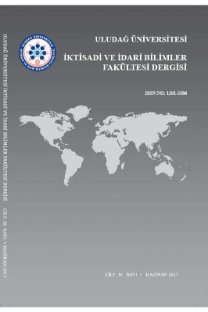Yalın üretim işletmeleri için değer akış yönetimi ve değer akış maliyetlemesi (DAM)
Geleneksel muhasebe sistemleri sıklıkla standart maliyetleme veya faaliyet tabanlı maliyetleme yöntemlerini kullanarak ürün maliyetlerini hesaplamaya odaklanmaktadır. Bu ürün maliyetleri daha sonra karar verme, stok değerleme, fiyatlama ve performans ölçümlerinde kullanılmaktadır. Bu maliyetler dikkatli bir şekilde hesaplanmış olsa da yalın üretim için faydalı değildir. Yalın üretimde işletme faaliyetleri değer akışı etrafında yürütülmektedir. Yalın işletmeler değer akışındaki bireysel ürünlerin maliyetleri ile ilgilenmezler, bir bütün olarak değer akışının maliyetiyle ilgilenirler. Ürün maliyetlerinin hesaplanması için karmaşık sistemlere sahip olmak ve gerçek maliyetleri standartlarla karşılaştıran ve sapmaları raporlayan zaman alıcı veri toplama sistemleri yerine yalın işletmeler, gerçek ve direkt değer akış maliyet bilgilerini toplamaktadır. Bu yönteme değer akış maliyetlemesi denilmektedir. Bu basit direkt maliyetleme yöntemi maliyetleri kontrol etmede, maliyetleri azaltmaya yön vermede ve sağlam karar vermeye temel oluşturmada ve Genel Kabul görmüş Muhasebe İlkelerine göre raporlamaya temel oluşturmada kullanılmaktadır.
Traditional accounting systems frequently focus on calculating production costs by using standart costing and activity based costing methods. These production costs then used for decision making, inventory valuation, pricing and performance measurement. Although these costs are carefully calculated, these are not useful for lean production. In lean production, business activities are executed around value streams. Lean businesses are not concerned with individual product costs, they are concerned with the total value stream costs.Lean companies collect real and direct value stream cost information rather than having a complex systems for product cost calculation and time consuming data collection systems for comparing actual cost to standarts and reporting variances. This method is called value stream costing. This simple direct costing method is used for controling costs, driving cost reductions, provide a basis for sound decision making and basis for reporting according to GAAP.
___
Abdulmalek, Fawaz A.-Rajgapal, Jayant (2007) “Analyzing the benefits of lean manufacturing and value stream mapping via simulation: A process sector case study” International Journal of Production Economics, (223-236).Baggaley, Bruce-Maskell, Brian (2003) “Value Stream Management For Lean Companies, Part I”, Cost Management, Mar/Apr, , 17,2: (23-27).
Baggaley Bruce-Maskell, Brian (2003) “Value Stream Management For Lean Companies, Part II”, Journal of Cost Management, May/June: (24-30).
Birgün, Semra-Gülen, Kemal Güven-Özkan, Kadriye (2006) “Yalın Üretime Geçiş Sürecinde Değer Akış Haritalama Tekniğinin Kullanılması: İmalat Sektöründe Bir Uygulama”, İstanbul Ticaret Üniversitesi Fen Bilimleri Dergisi, Yıl:5, Sayı:9, Bahar 2006/1: (47-59).
Cooper, Robin-Maskell, Brian (2008) “How to Manage Through Worse-Before- Better”, MIT Sloan Management Review, Summer: (58-65).
Emiliani, M.L.-Stec, D.J. (2004) “Using value stream maps to improve leadership”, The Leadership&Organization Development Journal, Vol 25, No. 8: (622- 645).
Gordon, Gus (2010) “Value Stream Costing As A Management Strategy For Operational Improvement”, Cost Management, 24, 1, Jan/Feb: (11-17).
Huntzinger, Jim (2006) “Economies of Scale are Dead: Right-Sizing for Effective Cost Management and Operations”, Cost Management, Jan/Feb: (18-26).
Institute Of Management Accountants (2006) “Accounting For The Lean Enterprise: Major Changes To The Accounting Paradigm”, Statements on Management Accounting, www.imanet org
Kaplan, Robert S. (1984) “Yesterday’s accounting undermines production”, Harvard Business Review, July-August: (95-101).
Kennedy, A. Frances-Huntzinger, Jim (2005) Lean Accounting: Measuring and Managing The Value Stream, Cost Management, Sept/Oct,19, 5: (31-38).
Kroll, Karen M. (2004) “The Lowdown on Lean Accounting”, Journal of Accountancy, Vol 198, Iss 1, July: (69-76).
Lin, Wang-Quingmin, Yuan (2009) “Lean Accounting Based on Lean Production”, Management and Service Science, MASS’09 International Conference on (978-1-4244-4639-4, Sept: (20-22).
Locher, Drew A. (2008) Value Stream Mapping for Lean Development, Productivity Pres, New York.
Maskell, Brian (2006)“Solving The Standart Cost Problem”, Cost Management, 20,1, Jan/Feb: (27-35).
Maskell, Brian H.- Baggaley, Bruce (2004) Practical Lean Accounting: A Proven System for Measuring and Managing the Lean Enterprise, Productivity Press, New York.
Maskell-Katko, “Value Stream Costing:The Lean Solution To Standart Costing Complexity and Waste”, Lean Accounting Best PRactices for Sustainable Integration, ed.Joe Stenzel, John Wiley&Sons, 2007.
Maskell, Brian-Maynard, Ross (2008) “Keeping it Lean”, Inyheblack, 78, 7, Aug: (59-61).
Özkan, Kadriye-Birgün, Semra-Kılıçoğulları, Pınar (2005) “Müşteriden Tedarikçiye Değer Yaratma: Otomotiv Endüstrisinde Değer Akışı Haritalandırma Uygulaması”, V. Ulusal Üretim Araştırmaları Sempozyumu, İstanbul Ticaret; Üniversitesi, ‘5-‘7 Kasım: (307-312).
Sulliven, William G.-McDonald, Thomas N.-Aken, Eileen M. Van (2002) “Equipment replacement decisions and lean manufacturing”, Robotics and Computer Integrated Manufacturing, 18: (255-265).
Tapping, Don-Luyster Tom-Shuker Tom (2002) Value Stream Management, Productivity Pres, New York.
Tektüfekçi, Fatma-Selek, Seha (2009) “Geri Püskürtme Yöntemi ve Diğer Maliyetleme Sistemleri İle Olan İlişkisi”, Süleyman Demirel Üniversitesi İktisadi ve İdari Bilimler Fakültesi Dergisi, C. 14, S.3: (149-174).
Ward, Yvonne-Graves (2004) Andrew, “A New Cost Management & Accounting Approach For Lean Enterprises” School of Management Working Paper Series, 5: (7-9).
- ISSN: 1301-3386
- Yayın Aralığı: Yılda 2 Sayı
- Başlangıç: 2018
